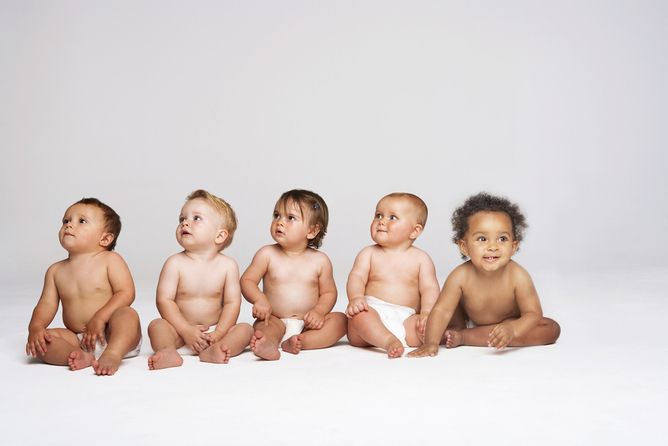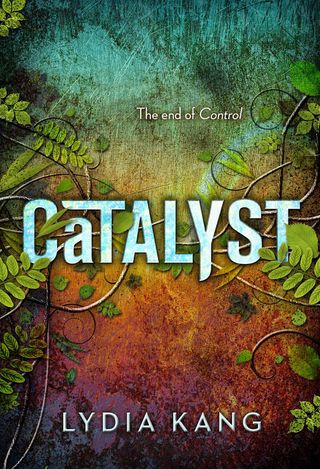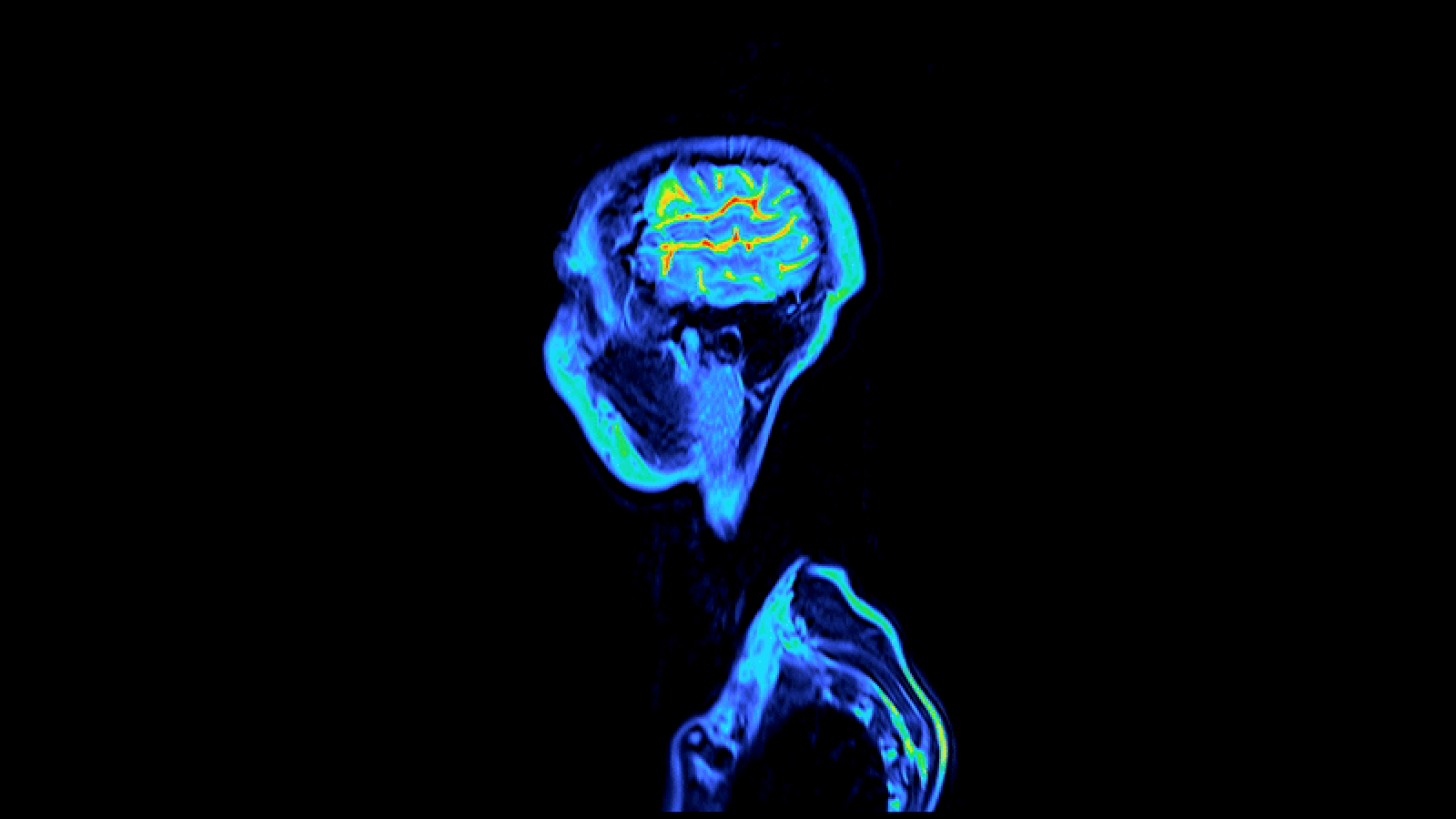
Designer Superbabies Could Rewrite Human Reproduction (Op-Ed)

Lydia Kang is an author of young adult fiction, poetry, and narrative non-fiction. Her debut novel, "Control" (2013) and its sequel, "Catalyst" (2015) are published by Penguin/Kathy Dawson Books. A practicing physician, her literary website is www.lydiakang.com. She contributed this article to Live Science Expert Voices: Op-Ed & Insights.
Recently, one of my pregnant colleagues told me she was about to have her second-trimester ultrasound, and was excited to learn whether the child would be a boy or girl.
"I just want to know, so I can prepare," she said. "But I'm hoping for a girl."
Hope: the desire and expectation for a certain thing to happen.

Parents-to-be are replete with hope. They hope for baby boys or girls; they hope for smooth pregnancies and uncomplicated deliveries. And most of all, they hope for healthy babies.
But hope, by definition, is not expectation. Hope implies uncertainty. But what if all the uncertainty about having a baby were nonexistent?
Bringing children to childless couples
Sign up for the Live Science daily newsletter now
Get the world’s most fascinating discoveries delivered straight to your inbox.
Technology and advances in medicine have certainly changed the landscape of procreation. Fertility treatments, sperm and egg donors, and surrogates have given children to couples who would have been childless a few decades ago. Expectant parents know all about folic acid, avoiding Listeria-laden cold cuts, and quitting tobacco and alcohol consumption for the sake of a healthy baby. Physicians can test for diseases in utero, and know genders months ahead of labor day.
Doctors can even bank umbilical cord blood to prepare for the minuscule possibility that a child might need a stem cell transplant someday — for example, if the child's blood cells turned cancerous.
Still, this is isn't enough to protect future generations from developing Alzheimer's disease, diabetes , cancer or Grandpa's bad hip. What if we could choose to give our future children the very best of our genes, without the lemons?
Un-natural selection
It's already happening. The United Kingdom has voted in favor of allowing the creation of in-vitro fertilization (IVF) embryos with DNA from three parents, instead of two — this would be done to avoid diseases inherited from maternal mitochondrial DNA. We can genetically profile embryonic cells and decide if they're fit for implantation into the womb, to avoid deadly diseases. And, parents can select embryos so that a newborn child can become a marrow donor for an ill sibling.

And what about the uterus? It does a stellar job of turning tiny embryos into breathing, screaming babies 40 weeks later, but we can't be sure that toxins from the environment aren't affecting the fetus. We can't force mothers-to-be not to smoke or drink, or require them to take their prenatal vitamins. Can science improve upon this naturally occurring, but potentially contaminated organ? The best we have for an artificial womb in today's world is the neonatal intensive care unit, which can care for babies born weeks and months before their due dates. But this technology is still quite limited.
Why not create an artificial, extracorporeal uterus? It would prevent the hazards of pregnancy for women, and could perfectly control the in-utero environment to optimize baby making. While we're at it, we could also use those artificial wombs to grow extra body parts to keep in storage, for when our own start to weaken from age, bad luck or bad lifestyle choices. Fake wombs could drastically decrease infant and maternal mortality, and increase life expectancies at the same time. [11 Big Fat Pregnancy Myths ]
Might all this be considered the ultimate in preventative medicine?
Prevention as a cure
As a practicing academic internal-medicine physician, I'm personally and professionally invested in prevention. It's why I'm nudging my patients to get their vaccines, pushing colonoscopies on everyone over age 50 and exercising when I'd much rather eat a carton of Haagen-Dazs coffee ice cream.

With these thoughts in mind, I put a hefty dose of genetic manipulation into the mix when I wrote "Control" and "Catalyst," my near-future, science-fiction novels for teens. In the books, fear of the misuse of genetic technology results in the outlawing of human DNA manipulation. But for some reason, illegal, mutant children are being born. Sometimes they have four arms (great huggers, by the way) or two brains (so they can take turns sleeping to get that 24-hour working day everyone wants), and some are built with a longevity gene. Their ability to procreate has been turned off using real-life "terminator technology" (which exists, but is not currently commercially in use) as if they were proprietary designer vegetables. Without the biological "key" from their creator, they can't have children. [7 Baby Myths Debunked ]
It's the ultimate in contraceptive technology and superbaby making. It stretches the limits of human capabilities while fencing them in. It's all fun in a book, but in real life, the questions about designer babies are far heavier.
Everyone hopes for generations of children to be born with healthy, long lives. But are people willing to go to the lengths to go beyond "hope" and use science and technology to change this hope to an "expectation"? And if science gets that far, will people go further and start making their own superbabies who are smarter, longer lived and far more good looking than their parents, and have the option of those very useful extra arms and heads? ['Catalyst' (US 2014): Book Excerpt ]
I think some of these answers will come even within the next decade. In the meantime, help yourself to some prenatal vitamins.
Follow all of the Expert Voices issues and debates — and become part of the discussion — on Facebook, Twitter Google+. The views expressed are those of the author and do not necessarily reflect the views of the publisher. This version of the article was originally published on Live Science.











